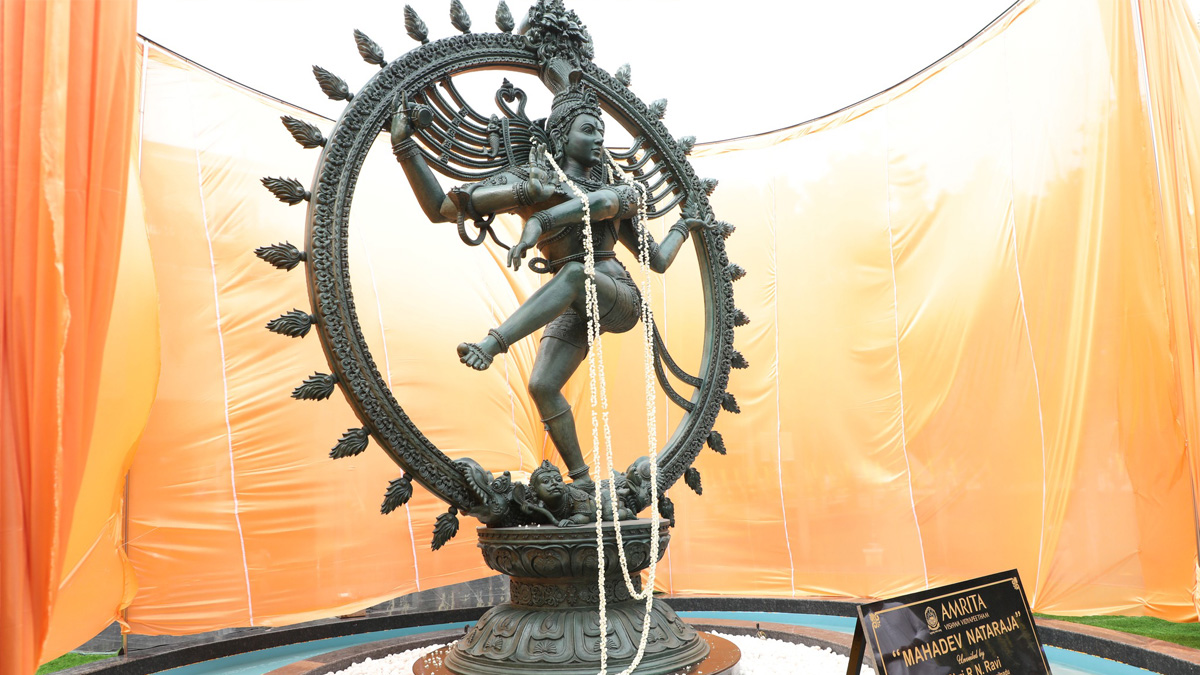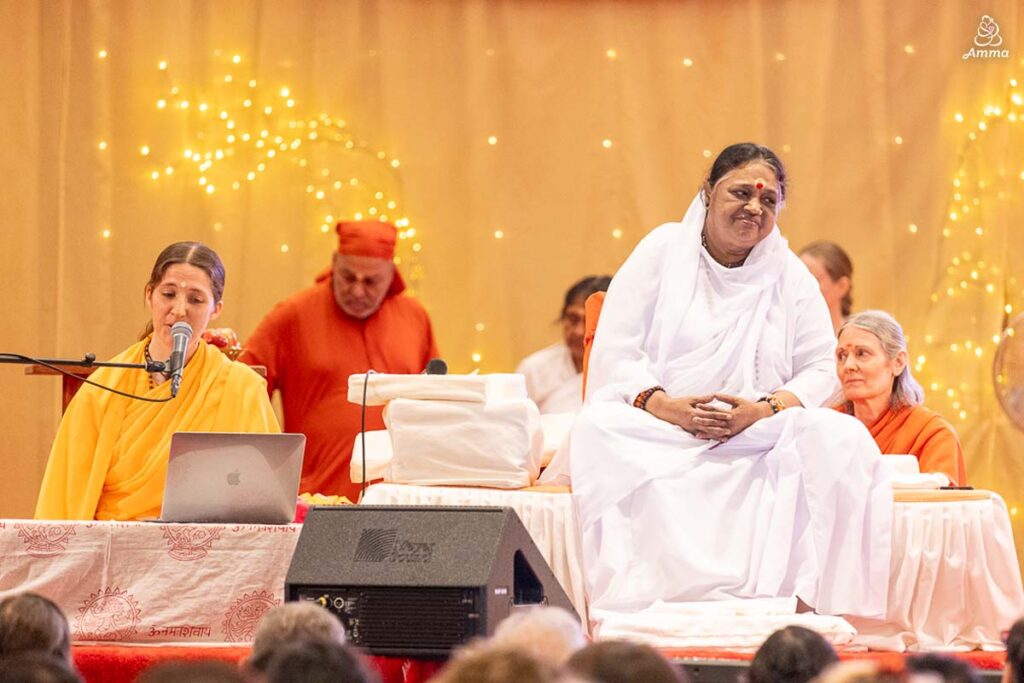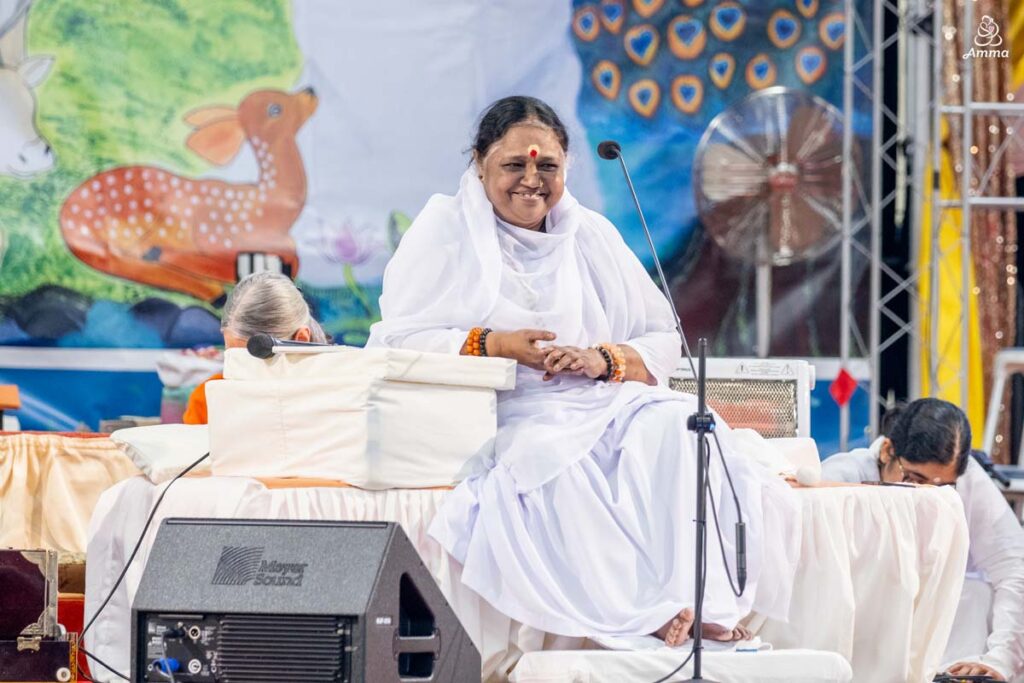The Hon’ble Governor of Tamil Nadu, Sri RN Ravi, unveiled a 22ft-tall sculpture of Mahadev Nataraja at Amrita Vishwa Vidyapeetham, Coimbatore. The ceremony took place on October 6th at the university’s main campus in Ettimadai.
As Amma, Amrita’s Chancellor, often says: it is not the idol that you worship, but the principles behind it. Every symbol conveys essential values. As Shiva in this form, Nataraja symbolises the roles of creator, preserver, and destroyer of the universe, conveying the traditional concept of the never-ending cycle of time.

In the first half of the twentieth century, Ananda K. Coomaraswamy shared his observations on what Lord Nataraja represents. Coomaraswamy was a Ceylonese metaphysician, historian, and philosopher of Indian art who was among the early interpreters of Indian culture to the West.
He explained that this lord of dancers and king of actors holds the cosmos as his theatre. With many different steps in his repertory, he himself is actor and audience.
“A great motif in religion or art, any great symbol becomes all things to all men; age after age it yields to men such treasure as they find in their own hearts. Whatever the origins of Shiva’s dance, it became in time the clearest image of the activity of God which any art or religion can boast of,” he wrote in a text entitled “The Dance of Shiva”.
Fritjof Capra is a Vienna-born scientist who wrote The Tao of Physics, an international bestseller first published in 1975. In it, he focuses upon how Shiva’s cosmic dance is a central metaphor for the patterning of subatomic particles in modern day physics.
“The rhythm of creation and destruction is not only manifest in the turn of the seasons and in the birth and death of all living creatures, but is also the very essence of inorganic matter. For modern physicists, then, Shiva’s dance is the dance of subatomic matter,” Capra wrote in the book.
“Hundreds of years ago, Indian artists created visual images of dancing Shivas in a beautiful series of bronze statues. In our time, physicists have used the most advanced technology to portray the patterns of cosmic dance. The metaphor of the cosmic dance thus unifies ancient mythology, religious art, and modern physics.”
In alignment with the philosophies of both men, in 2004 a statue of Lord Nataraja was unveiled at CERN, the European Center for Research in Particle Physics in Geneva. It was given by the Indian government to celebrate the research centre’s long association with the country and to emphasise the profound message Nataraja communicates in its field of study.

With this same universal vision at its core, the installation of the Nataraja sculpture in Amrita’s Coimbatore campus expands the concept from the subatomic realm back to the world before our eyes that Nataraja’s cosmic dance also encompasses.
Amrita’s philosophy of education is not just equipping students for a living, but also a formation for life with an emphasis on compassion-driven research with global impact. Thus, every aspect of knowledge a student earns maintains deep-rooted cultural values, alongside the social commitment to the greater good of society—a society that can live in harmony with one another in the universal rhythm.
The Nataraja statue was conceptualised and made by the Amrita Shilpa Kalakshetra, an extension of Amrita to train talented youth in traditional arts and help restore lost arts and crafts to their former glory and status. Our Coimbatore campus is also home to seven other statues including Saraswati Devi, Adi Shankaracharya, Dakshinamoorthy Swami, Meerabai, Mother & Child, Arjuna, and The Buddha.





